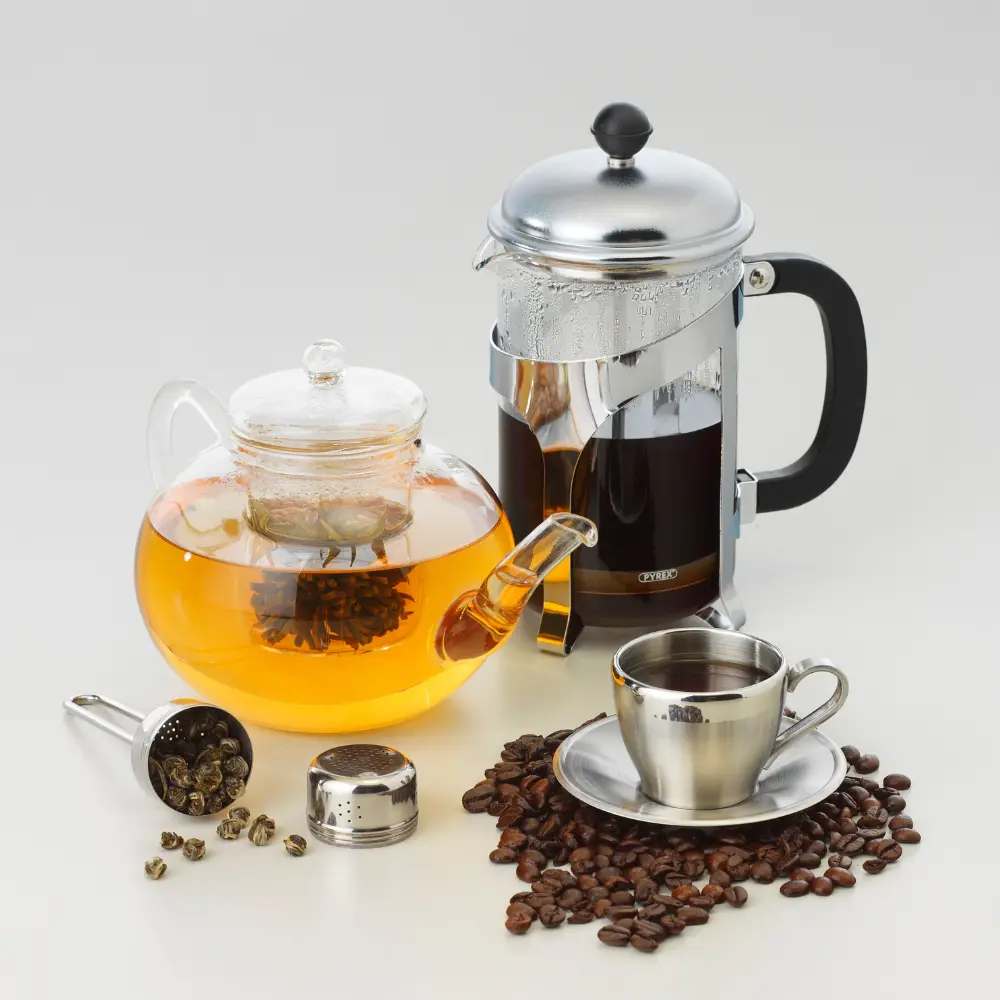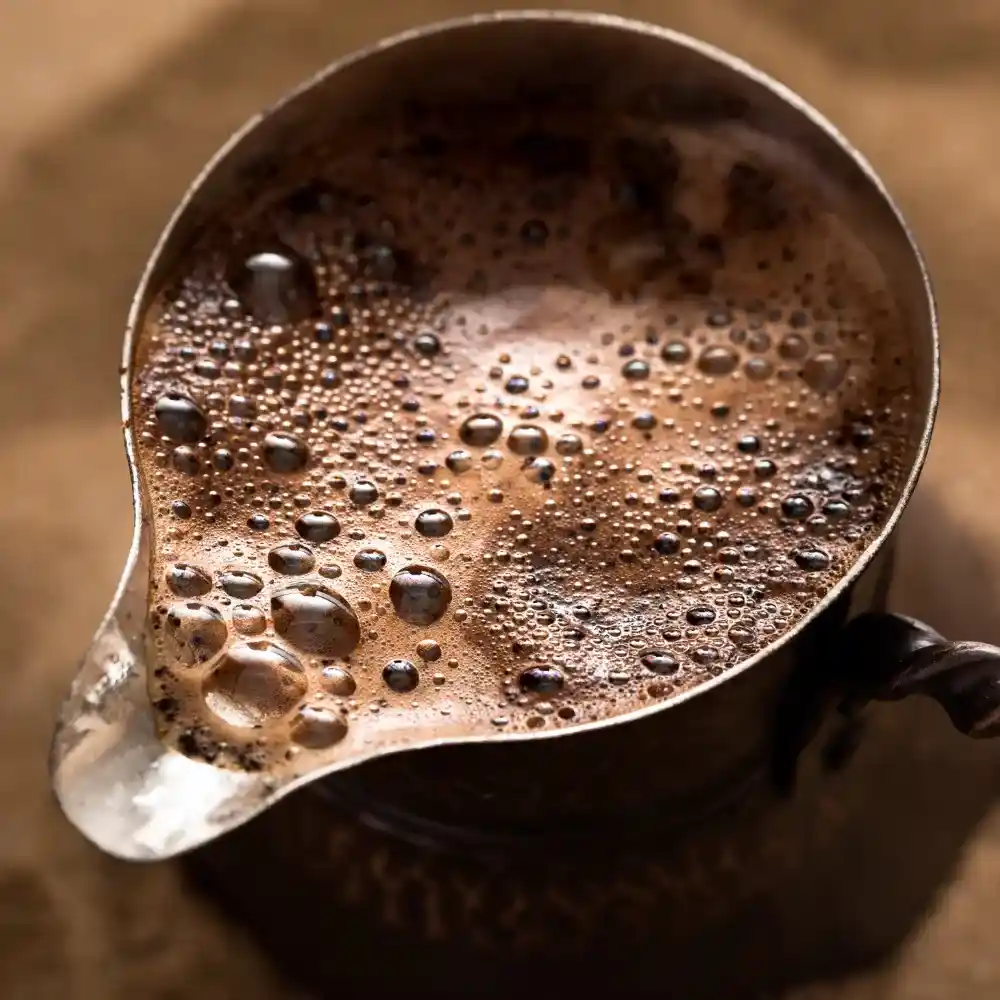Coffee, the dark elixir that kicks off many a morning routine and fuels countless all-nighters, is a staple in households and workplaces across the globe. It’s a subject of fascination and curiosity for enthusiasts and connoisseurs, as its rich flavor profile provides the perfect platform for the intricate art and science of brewing. But one question that often arises and stirs heated debates among coffee enthusiasts is: Can you burn coffee?
Yes, you can indeed burn coffee, and the consequences are bitter, quite literally. A burnt cup of coffee can turn a delightful experience into an unpleasant ordeal. Understanding how coffee can be burned, what it means for the coffee drinker, and how to prevent it can dramatically improve your coffee experience.
In this article, we will explore the truth behind burnt coffee and provide a comprehensive guide on how to avoid such a mishap in your brewing journey. Whether you’re a seasoned coffee aficionado or a beginner, we invite you to delve into the world of coffee brewing with us. Together, let’s unravel the mystery behind burnt coffee and elevate your brewing game to the next level.
Burning Coffee: Key Takeaway
- The Art of Roasting: Understanding the science of coffee roasting is vital, as over-roasting can lead to burning coffee, impacting the flavor and aroma.
- Spot the Burn: Being able to identify the signs of burnt coffee through taste, aroma, and visual cues can enhance your coffee-drinking experience.
- Prevention is Key: Adopting the right coffee roasting technique and precision in temperature and brew time can prevent coffee from burning.
- Master Your Tools: Knowing how to use brewing tools like the French Press and espresso machines correctly plays a significant role in avoiding burnt coffee.
- Beyond the Taste: Burnt coffee doesn’t just ruin your brew; it can also have potential health implications, contribute to food wastage, and affect sustainable coffee practices.
Understanding How Coffee Can Be Burnt
To appreciate the art and skill of brewing the perfect cup of java, it is crucial to understand how coffee can be burnt in the first place. The process of burning coffee usually revolves around two factors: the roasting process and the brewing method. A delicate balance of temperature, time, and technique is required to avoid burning coffee, leading to a bitter and unpleasant taste.
The Science of Coffee Roasting
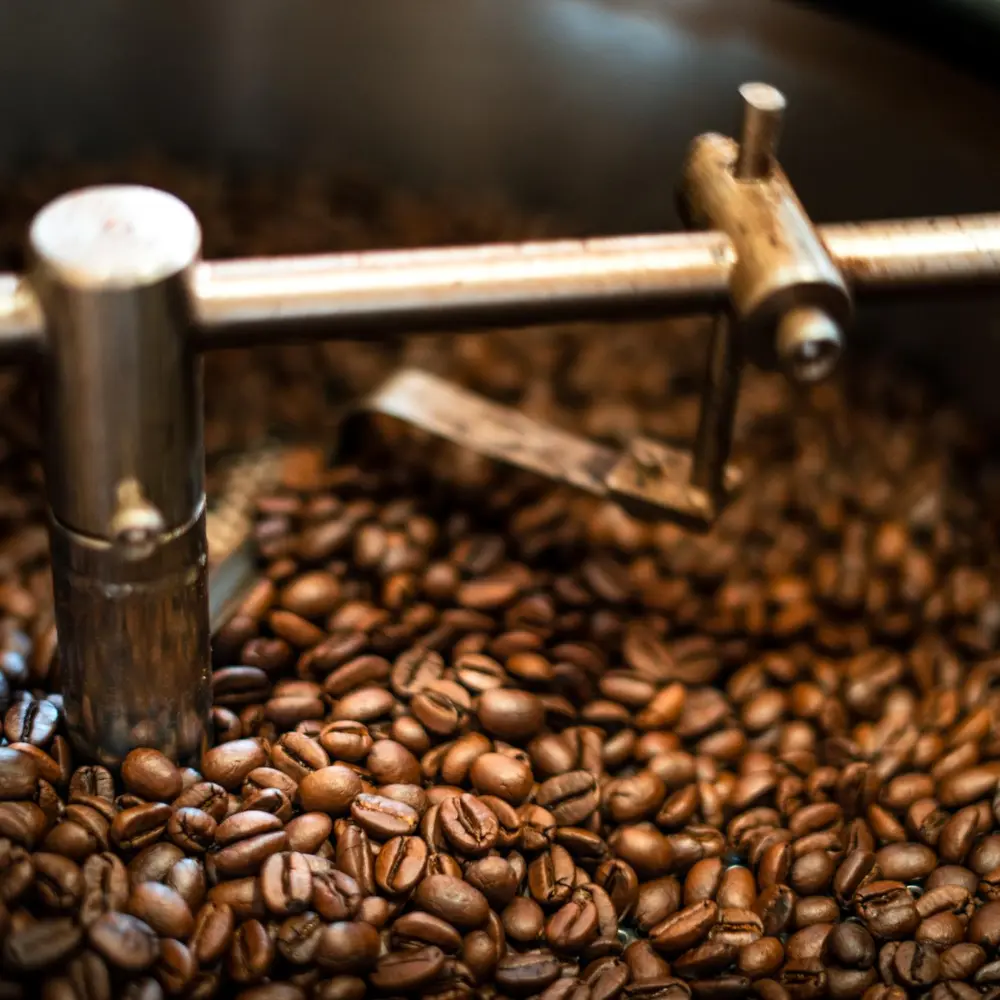
Coffee roasting is an art that has been perfected over centuries. It involves applying heat to coffee beans to transform them from their raw, green state into the aromatic, brown beans we are familiar with. However, this process also exposes the beans to the risk of being burned.
- If the temperature during roasting is too high, the beans can become overly dark and oily, losing their natural flavors. This results in a burnt, smoky taste.
- The duration of the roasting process also plays a crucial role. Roasting for too long can dehydrate the beans to the point of burning.
- The size and quality of the beans matter as well. Larger, high-quality beans typically require more heat and time to roast properly compared to smaller, lower-quality beans. However, inconsistent sizes within a batch can lead to uneven roasting, with some beans burning while others remain under-roasted.
Impact of Temperature on Coffee Flavor

Temperature plays a pivotal role in determining the final flavor profile of your coffee. It affects both the roasting and brewing stages of coffee preparation.
- During brewing, if the water temperature is too high (generally above 205 degrees Fahrenheit), it can over-extract the coffee, leading to a bitter, burnt taste.
- On the other hand, water that is too cool (below 195 degrees Fahrenheit) may lead to under-extraction, resulting in a sour and weak cup of coffee.
- It’s important to note that the ideal brewing temperature can vary based on the type of coffee and brewing method. Therefore, precise control of temperature is key to avoiding the pitfall of burning coffee.
Over-Extraction: A Common Coffee Brewing Mistake
Over-extraction is one of the most common coffee brewing mistakes that can result in burnt-tasting coffee. This happens when water is in contact with the coffee grounds for too long or the grind size is too fine, causing excessive amounts of flavor compounds to be extracted.
- Over-extracted coffee often tastes excessively bitter and has a dry, harsh aftertaste.
- The color of the brew can also provide a clue: over-extracted coffee often appears darker than properly brewed coffee.
- To prevent over-extraction, you need to adjust the brewing time and the grind size. As a rule of thumb, finer grinds should be brewed for shorter periods, while coarser grinds require more time.
Understanding these facets of coffee preparation can help you avoid the common mistake of burning coffee and enhance your brewing skills. It’s about appreciating the balance of science and art that goes into making the perfect cup of coffee.
Detecting Burnt Coffee: Signs and Symptoms
Identifying burnt coffee is an essential skill that all coffee lovers should master. Burnt coffee not only ruins the overall coffee-drinking experience but can also mask the unique characteristics and subtle nuances that different coffee beans have to offer. Whether you’re wondering, “How do you burn coffee?” or are trying to understand whether your coffee has been burnt, these key signs and symptoms will help guide you.
The Bitter Taste of Overcooked Coffee

One of the first tell-tale signs of overcooked or burnt coffee is an unusually bitter taste. Coffee naturally has a hint of bitterness due to its caffeic acid content, but a well-prepared cup of coffee should also have a balance of other flavors such as sweetness, acidity, and various taste notes (like fruity, chocolatey, or nutty, depending on the beans). If your coffee leaves a distinctly bitter taste that overwhelms all other flavors, chances are it’s been overcooked.
- This bitter taste is usually due to over-extraction or burning during the brewing process, where too many compounds are extracted from the coffee grounds, resulting in a harsh, burnt flavor.
- If your coffee has an acrid, almost chemical-like aftertaste, it’s a clear sign of burning.
Unusual Coffee Aroma: A Red Flag
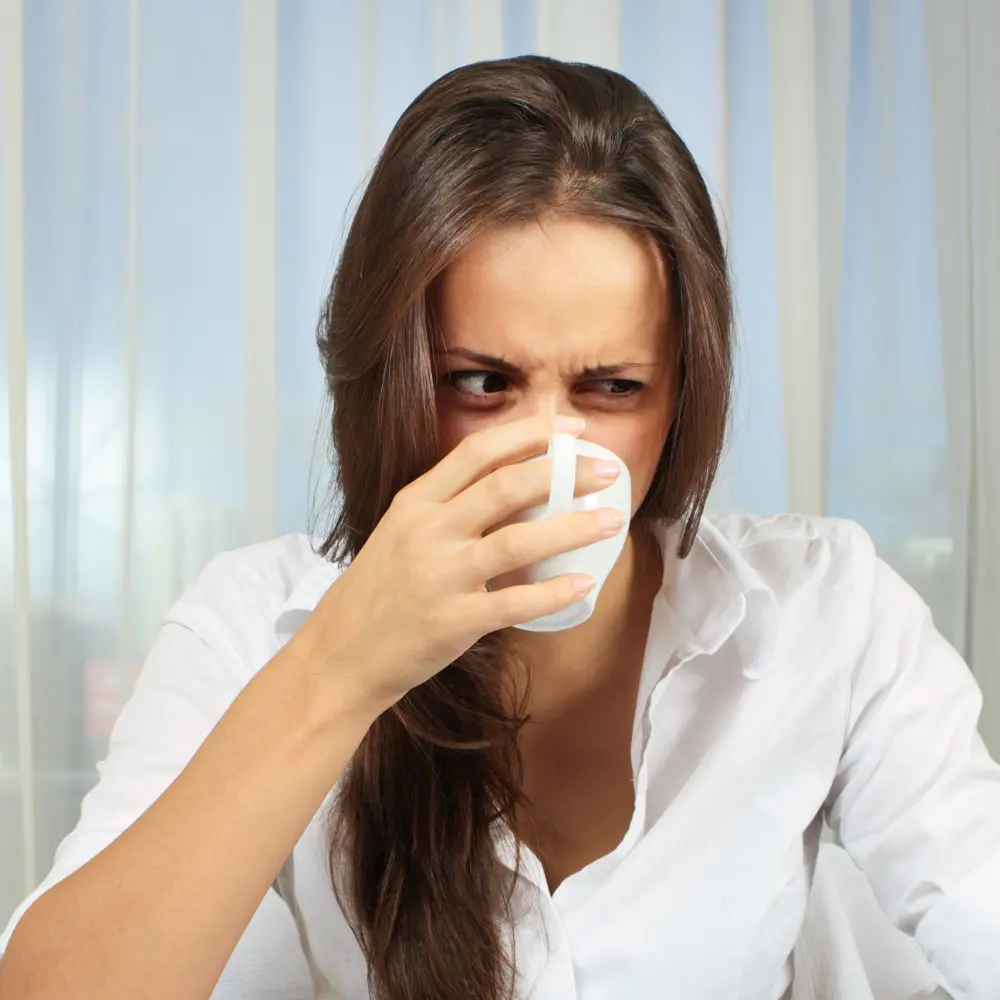
The aroma of coffee is a significant part of the coffee-drinking experience. In fact, a large part of what we perceive as taste is actually due to our sense of smell. Therefore, an unusual aroma can serve as a warning sign of burnt coffee.
- Normally, coffee should have a rich, appealing aroma. The scent can range from fruity and floral to nutty or chocolatey, depending on the type of coffee beans and how they’ve been processed and brewed.
- However, if your coffee gives off a smell that’s similar to burnt rubber, charred wood, or has a smoky, ashy quality, then you’re likely dealing with burnt coffee.
Visual Cues: How Does Burnt Coffee Look?

Visual cues can also help you determine whether your coffee is burnt. While the color of coffee can vary depending on the type of roast and brewing method, some visual indicators can hint at a problem.
- As discussed, burnt coffee often looks darker than usual. If your coffee has a murky, nearly opaque appearance rather than a rich, deep brown color, it may be burnt.
- In some cases, over-extracted or burnt coffee can have an oily sheen on the surface. This is due to the extraction of excessive oils from the coffee grounds during brewing, often associated with overheating or over-brewing.
By keeping these signs and symptoms in mind, you can avoid the common pitfalls of burning coffee, ensuring a satisfying and enjoyable coffee experience every time.
Is Dark Roast Coffee Considered Burnt Coffee?
A common misconception among coffee drinkers is the belief that dark roast coffee is essentially burnt coffee. While it’s easy to understand why one might think that way, given its darker color and robust flavor, it’s essential to note that dark roast coffee is not the same as burnt coffee.
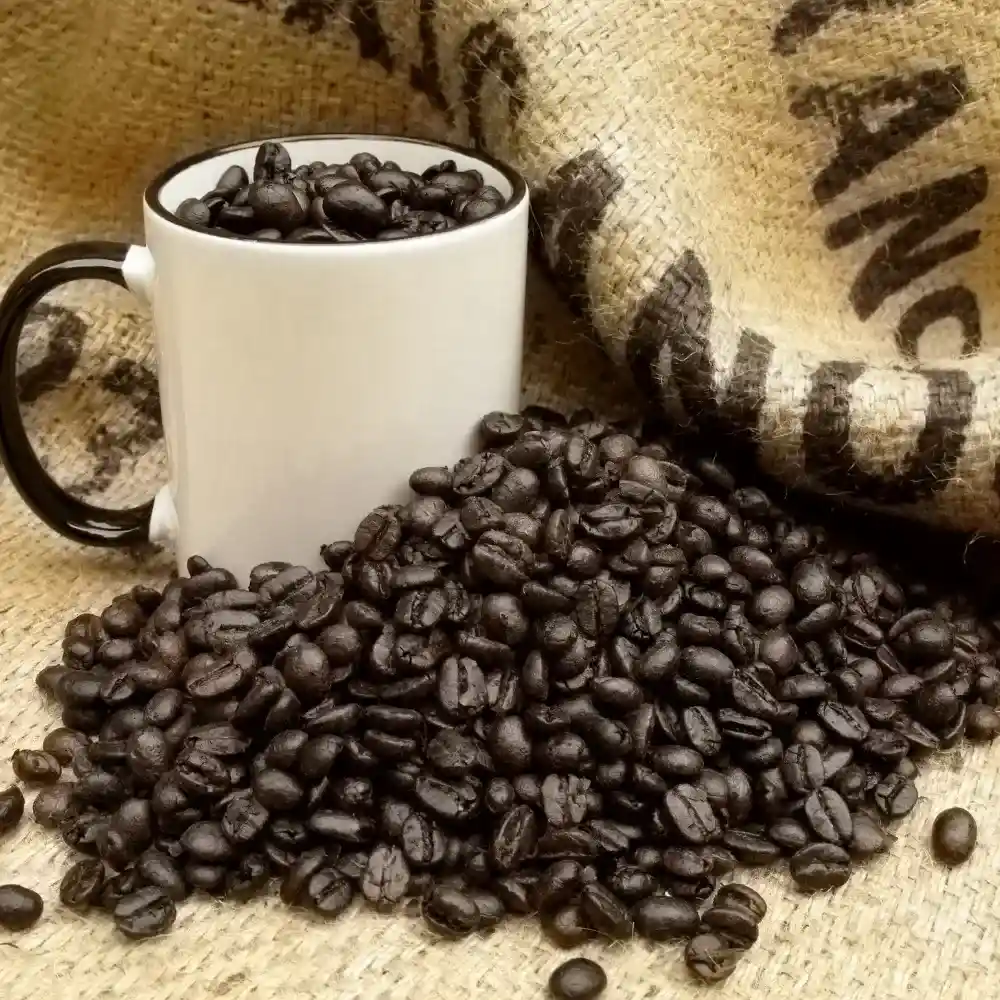
Dark roast refers to beans that have been roasted for a longer duration, resulting in a darker, oilier appearance and a bold, full-bodied flavor. The roasting process accentuates the deeper, bitter-sweet notes, and reduces the acidic tones, which is why dark roasts are often described as having a ‘chocolatey’ or ‘nutty’ taste.
However, the process of roasting is a delicate balancing act. If the roasting process is not monitored closely and the beans are roasted beyond the dark roast stage, they may get burnt. This can lead to a bitter, ashy taste, which is not characteristic of a properly executed dark roast.
So, while the dark roast is indeed darker and has a stronger flavor than lighter roasts, it is not considered burnt unless it has been over-roasted to the point where the beans are overly charred and the flavors become harsh and unpalatable.
Thus, it’s important to differentiate between a dark roast and burnt coffee. A high-quality dark roast will have a rich, full-bodied flavor without an excessively bitter or ashy taste.
In essence, a well-roasted dark roast coffee should provide a hearty, robust flavor that many coffee lovers enjoy, but it should not taste burnt. If your dark roast tastes more like charcoal than coffee, it’s likely been over-roasted. It’s all about finding the balance and appreciating the diverse range of flavors that coffee can offer at different roasting levels.
Steps to Prevent Coffee from Burning
Now that we’ve understood that you can burn coffee and the key signs of burning, it’s essential to learn how to prevent it. By following some fundamental rules in preparation, you can ensure a delightful cup every time that sings with flavor, rather than screams of over-extraction or burning. Let’s delve into these crucial steps to prevent coffee from burning.
Choosing the Right Coffee Roasting Technique
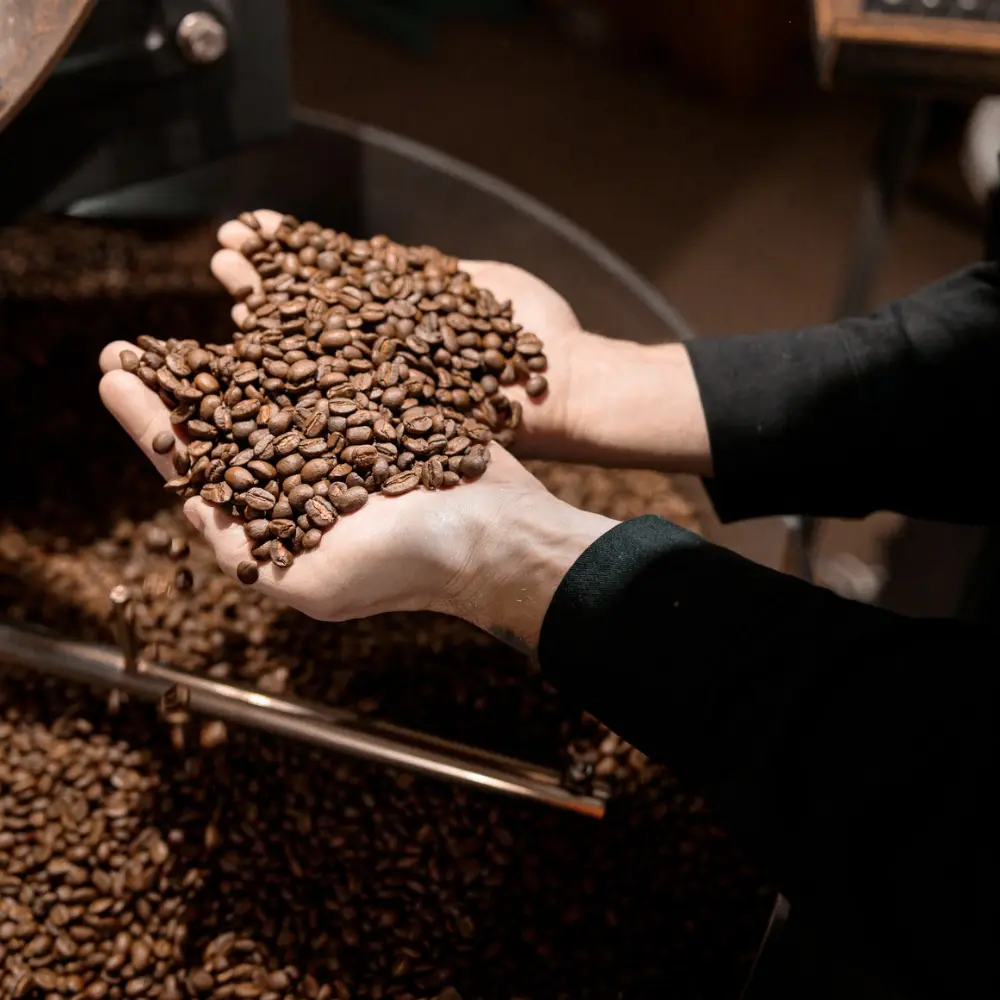
The journey to a perfect cup of coffee starts with the roasting process. Choosing the right roasting technique can significantly impact the flavor of the coffee and is the first step in preventing burnt coffee.
- Understand the different stages of roasting: Roasting coffee is a delicate process and requires attention and understanding. It usually involves several stages, including drying, browning, and development. Each stage contributes to the flavor and aroma of the coffee. Knowing when to stop roasting to prevent burning is critical.
- Invest in a good coffee roaster: For those roasting at home, investing in a good coffee roaster can make a significant difference. A quality roaster will provide better control over temperature and roasting time, allowing you to achieve the desired roast level without burning the beans.
- Monitor the process: Whether you’re using a home roaster or a simple pan, always keep a close eye on the roasting process. Look for changes in color, listen for the ‘cracking’ sounds, and use your nose to detect any burning or smoky aromas.
Precision in Temperature and Brew Time

The perfect cup of joe requires precise control over temperature and brew time. Just as you can easily overcook a meal by not paying attention to the cooking time or heat, you can easily end up burning coffee by not correctly managing these two elements.
- Ideal coffee brewing temperature: The general recommendation for the ideal coffee brewing temperature is between 195°F (91°C) and 205°F (96°C). Exceeding this range can result in over-extraction and a burnt taste. (1)
- Brew time is also crucial: Different brewing methods require different brew times. For example, an espresso shot takes about 20-30 seconds, while a French press requires 4 minutes. Oversteeping or understeeping can lead to burnt or weak coffee, respectively.
- Use a thermometer: A kitchen thermometer can help you ensure that your water is in the ideal temperature range for brewing coffee. Similarly, a timer can help you keep track of brew time.
Coffee Grinding: Size Matters
The size of your coffee grounds has a significant impact on the taste of your coffee. If the grind size is not right for your brewing method, you risk over-extracting the coffee and imparting a burnt taste.
- For quick brew methods like espresso, a fine grind is appropriate as it allows rapid extraction of flavors.
- For slower brewing methods like a French press or cold brew, a coarse grind is better suited. This prevents over-extraction, which can lead to a burnt taste.
- Investing in a good quality burr grinder can help you achieve consistent grind sizes and improve the quality of your brew.
To sum up, understanding these steps and paying attention to the details of the roasting and brewing process can significantly improve the quality of your coffee and prevent burning. It’s all about finding the right balance and appreciating the art and science that goes into brewing the perfect cup.
Coffee Brewing Tools: How to Use Them Right
Using the right brewing tools and mastering their use is another essential step in preventing burnt coffee. Different brewing methods offer unique flavor profiles and require varying techniques. Let’s look at how to use some common coffee brewing tools and how to prevent burning coffee with each.
Mastering the Art of French Press
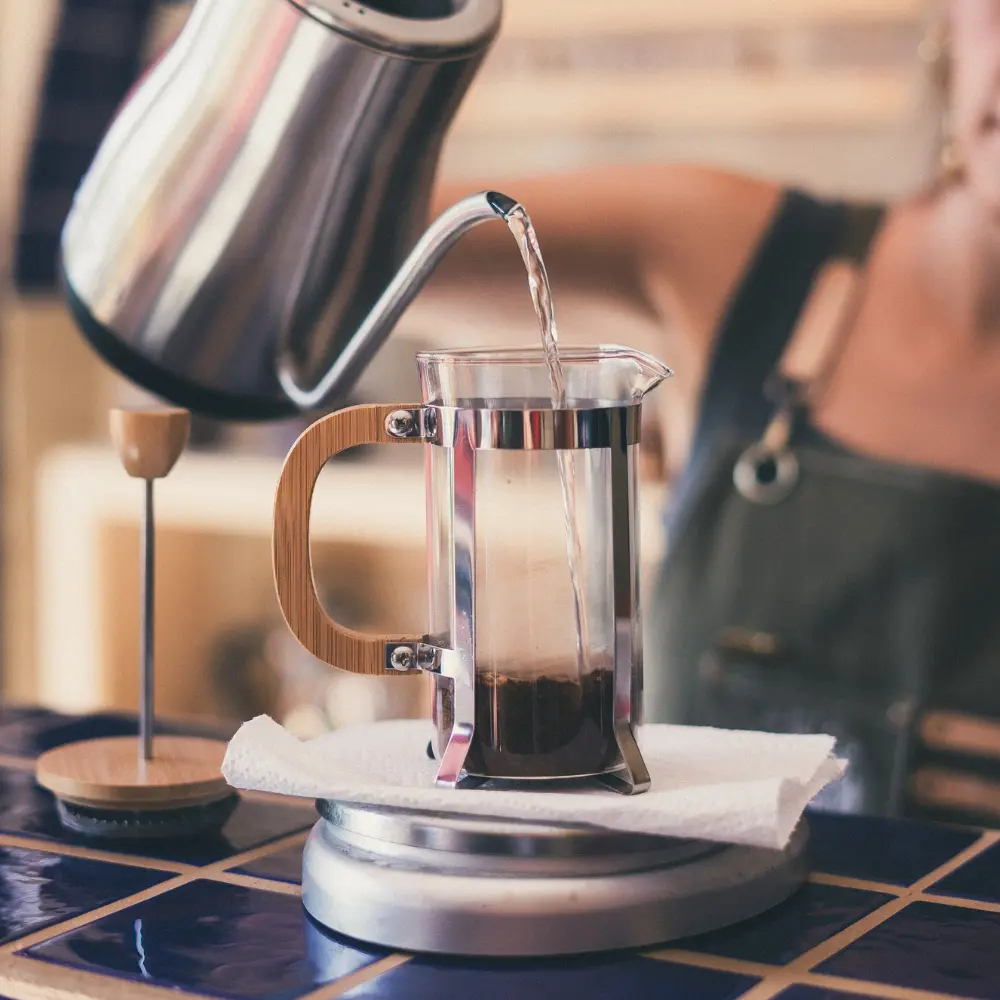
A French press, also known as a press pot, provides a full-bodied and flavorful brew. (2) Here’s how to use a French press without burning the coffee:
- Step 1: Coarse Grind: Start with a coarse grind. The large grounds are perfect for the French press’ long steep time, and they’re easy to separate from the brew, preventing over-extraction and a burnt taste.
- Step 2: Correct Water Temperature: Remember, the optimal temperature for brewing is between 195°F (91°C) and 205°F (96°C). Use a thermometer to ensure your water falls within this range before you pour it over the grounds.
- Step 3: The Steeping Time: Allow the coffee to steep for 4 minutes. Don’t leave the coffee sitting in the French press for too long after you’ve plunged it, as this can lead to over-extraction.
- Step 4: Serve Immediately: French press coffee is best enjoyed immediately after brewing. Leaving it to sit will not only let it cool but could lead to a burnt taste.
Making the Perfect Drip Coffee

Drip coffee makers are probably the most common type of coffee maker and are very user-friendly. Here’s how to prevent your drip coffee from burning:
- Step 1: Medium Grind: Use a medium grind for drip coffee. This grind size is ideal for the amount of contact time the water has with the coffee in a drip brewer.
- Step 2: Correct Water Temperature: Most automatic drip coffee makers regulate the water temperature for you. However, it’s always good to ensure your machine maintains the ideal brewing temperature.
- Step 3: Don’t let it sit: Drip coffee makers often have a hot plate to keep the coffee warm. However, leaving coffee on the hot plate for too long can result in a burnt taste. If possible, brew only as much coffee as you plan to drink immediately.
Espresso Machines: How Not to Burn Coffee
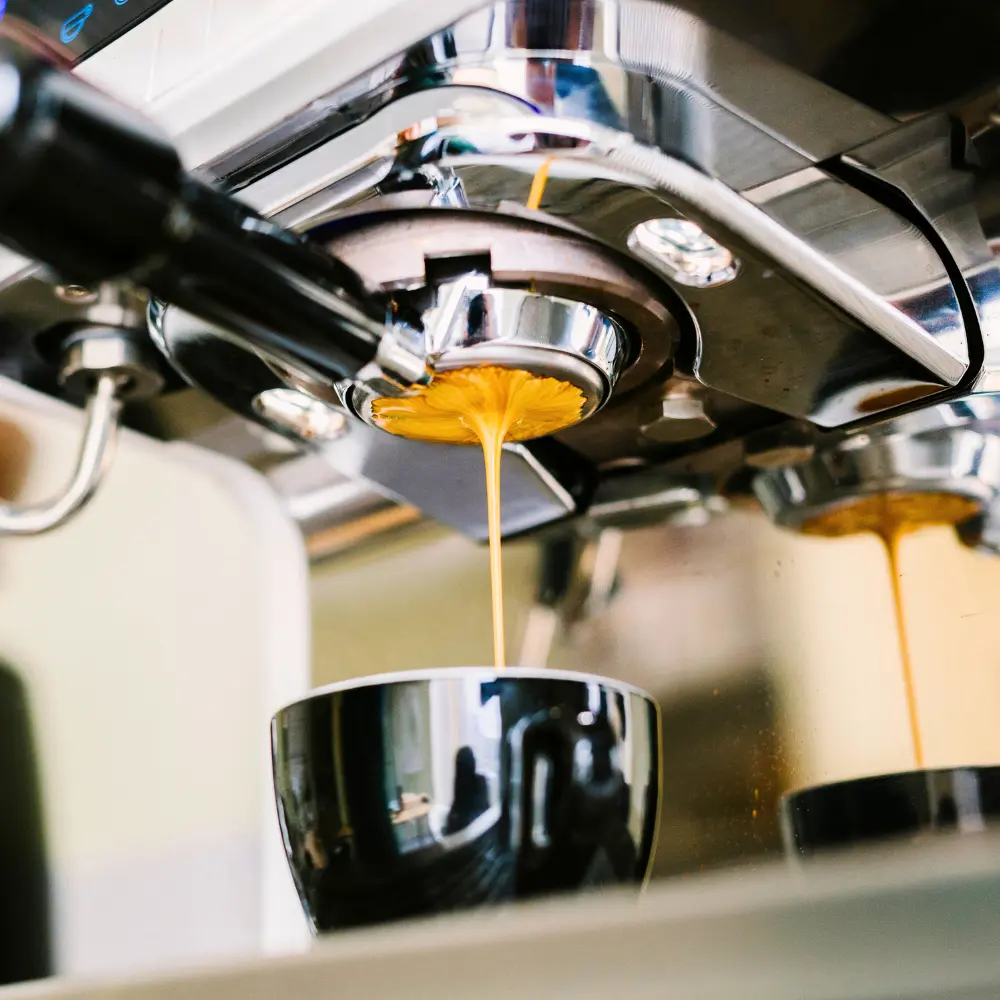
Espresso machines can be a bit tricky to master, but they produce a rich and flavorful coffee when used correctly. Here’s how not to burn coffee when using an espresso machine:
- Step 1: Fine Grind: Espresso requires a fine grind. This allows for the rapid extraction of flavors necessary for the short brewing time of espresso.
- Step 2: Correct Water Temperature: Like other brewing methods, the water temperature should be between 195°F (91°C) and 205°F (96°C). Many espresso machines control this for you, but it’s good to double-check.
- Step 3: Quick Brew Time: Espresso shots should take between 20-30 seconds. If it’s taking longer, your grind may be too fine. Conversely, if it’s too quick, your grind may be too coarse.
Mastering these brewing methods and understanding how to prevent burning can significantly enhance the quality of your coffee, ensuring you get the best possible flavors from your beans. It’s all about learning the tools and techniques, and with practice, you’ll be brewing coffee like a pro.
Burnt Coffee: Impact on Health and Environment
Besides the unpleasant taste, burning coffee has implications beyond just your cup. From the potential health effects to environmental considerations and food wastage, it’s important to understand the broader implications of burning coffee.
Health Implications of Burnt Coffee

While coffee is well-known for its potential health benefits, such as improving cognitive function and boosting metabolic rate, these advantages are significantly reduced when the coffee is burnt.
- Over-roasted or burnt coffee beans can produce acrylamide, a substance that, according to various studies, might have links to potential health risks when consumed in large amounts over a long period. Though the amounts in coffee are typically low, reducing exposure to acrylamide is generally a good idea. (3)
- Burnt coffee also often means over-extracted coffee, which can lead to a higher caffeine concentration. While caffeine in moderation has benefits, too much can cause discomfort, such as insomnia, jitteriness, and an increased heart rate.
- Over-extraction can also lead to a higher acid concentration, which may cause stomach discomfort in some individuals.
Sustainable Coffee Roasting and Brewing
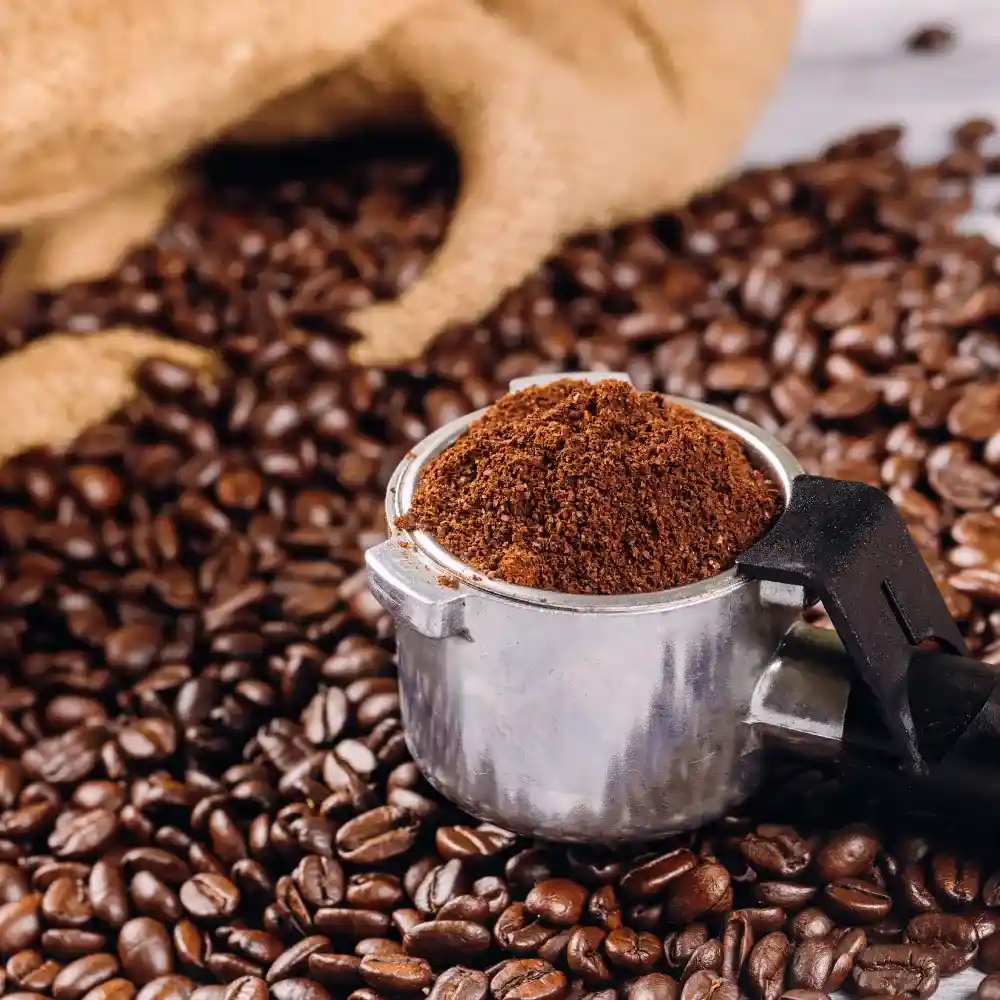
From an environmental perspective, sustainable coffee roasting and brewing practices can contribute to reduced energy use and lower carbon emissions.
- Roasting coffee at home, when done correctly, can save energy compared to industrial roasting. By avoiding the over-roasting and subsequent burning of coffee, you’re ensuring no energy is wasted in the process.
- Furthermore, brewing coffee at home can also be more sustainable. Single-use coffee pods, for instance, generate a significant amount of plastic waste. Opting for reusable filters or brewing methods like the French press or espresso machine can reduce this waste significantly.
Food Wastage: The Problem of Burnt Coffee
Lastly, burnt coffee contributes to food wastage. The United Nations estimates that approximately one-third of all food produced for human consumption is wasted.
- When coffee is burnt, it’s often discarded due to the unpleasant taste. This means not only wasted coffee but also wasted water and energy that went into growing, processing, transporting, and brewing those coffee beans.
- Moreover, if you’re throwing out a pot of burnt coffee and making a fresh one, you’re using twice the amount of coffee necessary for one brew. Over time, this can add up to a significant amount of wasted coffee.
Burning coffee not only ruins the flavor but also has broader health, environmental, and food waste implications. Therefore, understanding how to prevent coffee from burning can not only enhance your drinking experience but also contribute to better health and more sustainable and responsible consumption practices.
So, Can You Burn Coffee? – Conclusion
Our exploration has clearly established that you can burn coffee, with its effects resonating beyond mere taste alterations. The impacts spread to your health, and the environment, and even influence food wastage. However, understanding the mechanisms behind roasting and brewing coffee can equip you with the necessary skills to circumvent these issues.
We have delved into the art and science behind coffee, from the significance of roasting techniques and brewing methods to the potential consequences of neglecting these aspects. Yet, it is in these details that the beauty of coffee lies. With knowledge and practice, you can bring out the true richness of flavors in your coffee and ensure a gratifying coffee experience every time.
After all, brewing a perfect cup of coffee is an art. It’s about appreciating the journey from bean to cup, understanding the process, and enjoying the final product. So, as you brew your next cup, remember the lessons learned, and not only will you avoid the mishap of burning coffee, but you will also contribute positively to sustainability and waste reduction.
FAQ
How to detect if your coffee is burnt?
To detect if your coffee is burnt, look for a bitter taste, an unusual aroma, or a very dark and oily appearance of the beans.
What are some foolproof methods to avoid burning coffee?
Some foolproof methods to avoid burning coffee include using the correct water temperature, proper brewing time, appropriate grind size, and choosing the right roasting technique.
What is the impact of burnt coffee on health?
The impact of burnt coffee on health can include exposure to acrylamide, increased caffeine concentration, and potentially higher acidity, all of which could have negative effects with prolonged consumption.
How does the brewing method affect the chances of coffee burning?
The brewing method significantly affects the chances of coffee burning, with each method requiring specific water temperatures, grind sizes, and brewing times to avoid over-extraction and burning.




